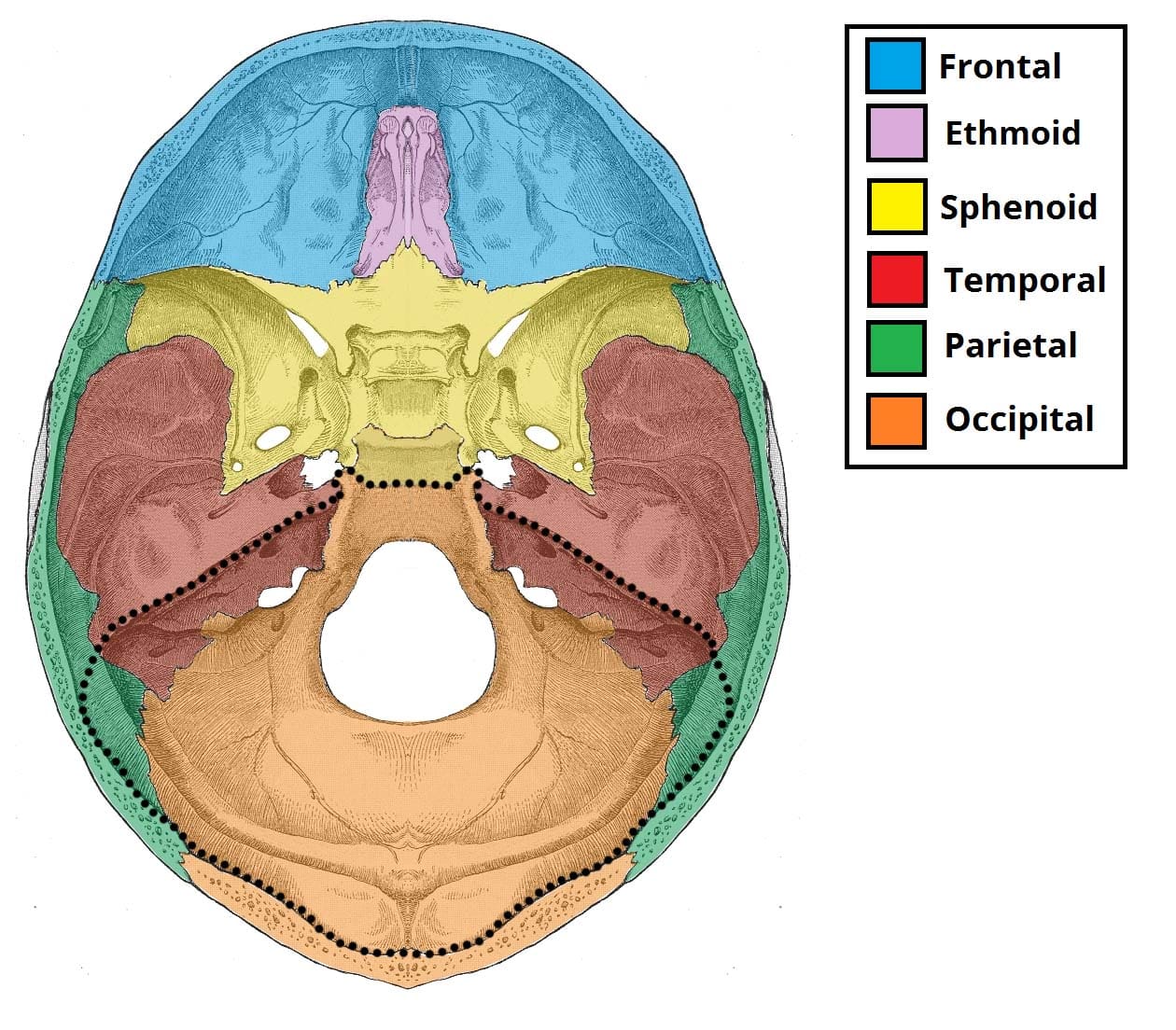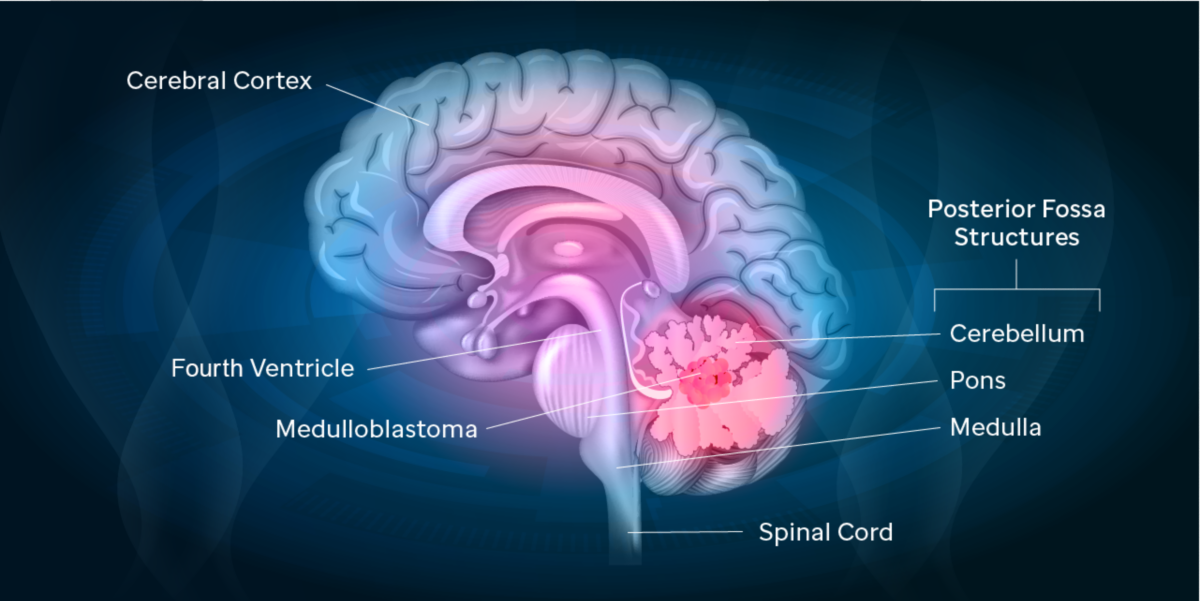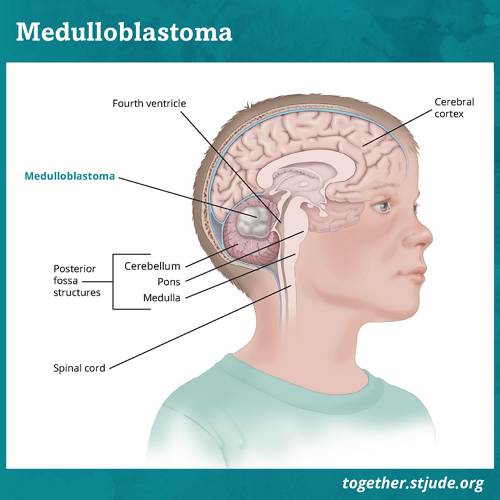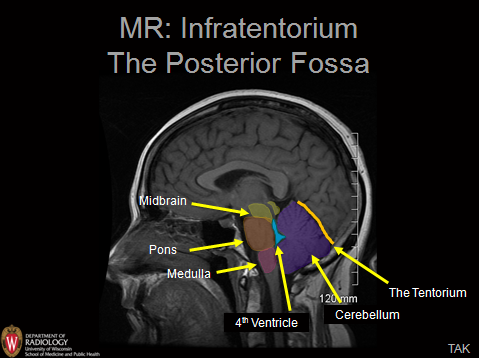Posterior fossa syndrome typically occurs in children but early detection of the condition and ensuing treatment may help reduce the need for lengthy hospital stays. It houses the cerebellum medulla and pons.

Posterior Cranial Fossa Wikipedia
Children with posterior fossa syndrome usually have a collection of symptoms.

. Demographic radiographic perioperative and. Posterior middle and anterior. The brainstem is responsible for controlling vital body functions such as breathing.
Gastrointestinal stromal tumor very rare 5. Obstructive hydrocephalus from posterior fossa tumor risk factors. Mega cisterna magna arachnoid cyst or Dandy Walker malformation.
It contains the brainstem and cerebellum. It is bounded as follows. Fossa cranii posterior lies at the lowest level of the internal cranial base and is the largest of the three cranial fossae.
If a tumor grows in the area of the posterior fossa it can block the flow of spinal fluid and cause increased. The posterior fossa region contains the brainstem which is responsible for controlling breathing regulating heart rate dilating and constricting blood vessels and giving a person the ability to. The posterior fossa or posterior cranial fossa is the deepest and largest and is defined by the occipital bone of the skull.
This is the most inferior of the fossae. The posterior cranial fossa is part of the cranial cavity located between the foramen magnum and tentorium cerebelli. Posterior fossa tumor has a very different differential in an adult as opposed to a child.
A postoperative syndrome labeled posterior fossa syndrome has been identified in certain children. The cerebellum is involved in many complex aspects of human behavior and function and when it is disrupted or insulted this can lead to significant sequelae in children with posterior fossa tumors. Within this fossa are two critical brain areas.
Download Citation The posterior fossa syndrome questionnaire. The outcome of these findings is not clear. Its is formed by the sphenoid temporal and occipital bones.
The brain stem and the cerebellum. Anteriorly it extends to the apex of the petrous temporal. Bones forming the posterior cranial fossa by Anatomy Next.
Surgery in the areas to the rear of the skull also known as the posterior fossa or cerebellum can cause long lasting negative effects in children. Posteriorly it is enclosed by the occipital bone. The cerebellum is the part of the brain responsible for balance and coordinated movements.
Cerebellar metastases most common. Most common posterior fossa primary brain tumor in adults. Is a condition that sometimes develops after surgery to remove a brain tumor in the posterior fossa region of the brain.
These areas of the brain control the autonomic nervous system coordination. The Posterior Fossa Society is a group of healthcare professionals interested in the study of posterior fossa syndrome also known as post-operative paediatric cerebellar mutism syndrome. The posterior fossa may be enlarged due to.
The cerebellum is the part of the brain responsible for balance and coordinated movements. The base of the skull is divided into three cranial fossae. Craniotomy Posterior Fossa.
The brainstem is responsible for controlling vital body functions such as breathing. Anteriorly and medially it is bounded by the dorsum sellae of the sphenoid bone. Formed in 2014 our regular meetings are a forum for sharing research forging collaborative working groups and improving treatment of post-operative.
This is a large superior projection of bone that arises from the body of the sphenoid. These effects include loss of muscle tone memory troubles unsteadiness and decreased ability to talk. What is the indication for surgery.
The posterior fossa is a small space in the skull found near the brainstem and cerebellum. The Posterior Fossa Society is an international group of researchers and health care professionals doctors nurses psychologists speech pathologists linguists neuroscientists etc who are dedicated to research into the causes features treatment and prevention of the post-operative pediatric CMS and CCAS in children and adults. Some authors suggest that CM is only one symptom of the CMS complex that also includes ataxia.
Borders of posterior cranial fossa. If a tumor grows in the area of the posterior fossa it can block the flow of spinal fluid and. Posterior fossa meningiomas that impinge on structures of the temporal bone or clivus may be difficult to access for optimal resection that maximizes tumor control and minimizes short- and long-term morbidities.
The posterior cranial fossa Latin. Preoperative Evaluation and Questions. Management strategy depends upon the size and location of these arachnoid cysts within the posterior fossa.
Also melanoma thyroid malignancies and renal cell cancer. The posterior fossa is a small space in the skull found near the brainstem and cerebellum. Since 1989 the two hospitals that comprise the setting for this study have treated 121 children with posterior fossa brain tumors.
The posterior cranial fossa is comprised of three bones. 7 Symptoms typically begin with intermittent headache often worse in the morning followed by vomiting and eventually gait disturbance. The occipital bone and the two temporal bones.
From the Emory University Hospital surveyed the CNS Central Nervous System Tumor Outcomes Registry at Emory CTORE for patients who underwent posterior fossa tumor surgery at 3 tertiary-care centers between 2006 and 2019. Medulloblastoma the most common malignant brain tumor of childhood occurs in the posterior fossa the part of the intracranial cavity that contains the brainstem and the cerebellum. Posterior fossa syndrome PFS or cerebellar mutism syndrome CMS is a collection of neurological symptoms that occur following surgical resection of a posterior fossa tumour and is characterised by either a reduction or an absence of speech.
This small area controls movement coordination and. Discrete posterior fossa cerebrospinal fluid CSF collections that are clearly separate from the fourth ventricle and vallecula are classified as posterior fossa arachnoid cysts PFAC12 Arai and Sato had clearly outlined the indications for surgery in PFAC. Posterior fossa tumors often cause hydrocephalus by blocking cerebrospinal CSF outflow pathways with resulting signs and symptoms of raised intracranial pressure ICP.
These anomalies can be identified during routine ultrasound screening performed in the beginning of the second half of pregnancy 22nd week. Approximately 60 to 70 of pediatric brain tumors originate in the posterior fossa. Posterior fossa meningiomas are tumors that form near the bottom of the skull by the brainstem and cerebellum.
To address this challenge the contemporary neurosurgeryneurotology team works collaboratively by managing patients jointly at every stage of care. Using science to inform practice Introduction Up to 34 of patients with medulloblastoma. Practitioners of all levels of experience will find Posterior Fossa Tumors in Children to be a richly illustrated state of the art.
Especially lung cancer and breast cancer. These effects are collectively known as Cerebellar Mutism Syndrome CMS or Posterior Fossa Syndrome. The posterior fossa is a space near the base of the skull that contains the.
Aneurysm AVM SAH Tumor Chiari Pre-op Neurologic condition. Hunt-Hess Grade for Aneurysm. Posterior fossa tumors are the most common pediatric brain tumors but are often difficult to treat owing to their proximity to critical brain structures and their tendency to cause marked intracranial hypertension.
Posterior Cranial Fossa Wikipedia

Posterior Cranial Fossa Boundaries Contents Teachmeanatomy

Figure Anatomy Of The Brain The Pdq Cancer Information Summaries Ncbi Bookshelf

Getting To The Bottom Of A Medulloblastoma Mystery St Jude Progress

Posterior Fossa Syndrome Together

Anatomical Location Of Posterior Fossa Meningiomas Cerebellar Download Scientific Diagram

Posterior Cranial Fossa Radiology Reference Article Radiopaedia Org

0 comments
Post a Comment